The Fear of Backlash is More Pronounced this Year
In the onslaught of current anti-LGBTQ legislation, hateful rhetoric, and political discourse, it has never been more important to highlight the LGBTQ community. GLAAD’s 2024 Accelerating Acceptance report shows that media exposure drives familiarity with our community by up to +50% and comfortability by up to +35%.
From a business perspective, inclusion undoubtedly makes a difference. Our 2023 Accelerating Acceptance report showed that 70% of non-LGBTQ adults believe companies should publicly support the LGBTQ community through practices like hiring, advertising, and sponsorships, and 3 out of 4 non-LGBTQ adults are comfortable seeing our community in ads.
Most Americans not only support our community but expect brands to depict people in their advertising that reflect the diversity of the world we live in today. Our soon-to-bereleased 2024 Advertising Visibility Index found that consumers are +51% more likely this year than 2023 to believe advertisers are not doing enough to represent the LGBTQ community appropriately. There is a gap in their expectations of advertisers and what they see on screens. 65% of adults and 74% of Gen Z adults place a responsibility on the part of the advertising industry to give visibility in their content to LGBTQ people, couples, families and communities. This is in contrast to the perceptions of backlash posed by the media and anticipated by brands over this past year, and it aligns with strong purchase intent communicated by LGBTQ and non-LGBTQ consumers. Data from MRI-Simmons shows nearly 3 out of 4 LGBTQ adults and over 2 out of 5 non-LGBTQ adults say they are more likely to purchase a product or service from a company or brand that supports the LGBTQ community.1
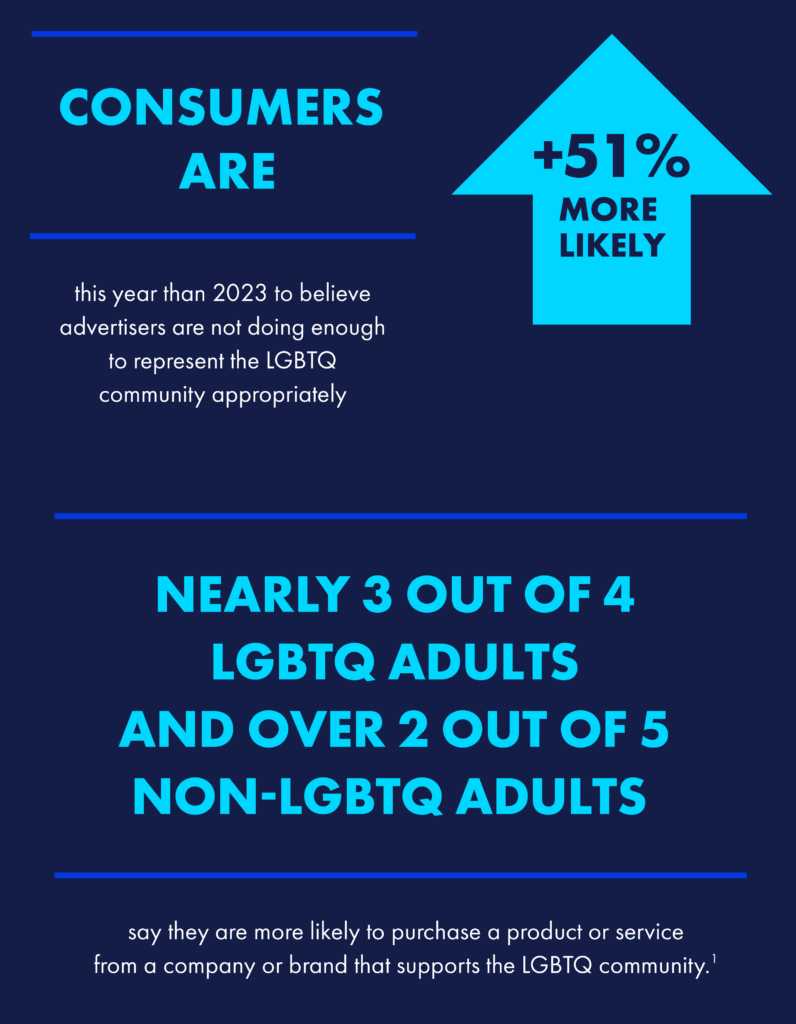
Despite that evidence, the landscape of inclusion and representation of our community in advertising took a negative turn during Pride 2023, when a few brands received backlash for their LGBTQ-inclusive partnerships or Pride-themed merchandise from a loud but small group of anti-LGBTQ extremists. The backlash resulted in two brands changing or moving away from their LGBTQ inclusion, but it also resulted in a media narrative led by those extremists to call for Pride to be “toxic.” Though the two brands faced public backlash, hundreds stayed true to their messaging and support of the LGBTQ community during Pride, and any backlash quickly subsided. Boycott strategies have changed over the past year to broadly attack diversity, equity, and inclusion (DEI) instead of LGBTQ inclusion exclusively. While a handful of brands publicly announced changes to DEI commitments, the industry at large is increasing legal oversight of but understands the necessity for DEI, with 83% of brands keeping their DEI initiatives intact, according to the Association of Corporate Citizenship Professionals.
Our Advertising Visibility Index addresses brand activity in 2024 compared to 2023. In it, we discuss how changes or perceived decreases in the visibility of brand engagements during Pride 2024 did not signal a reduction in their commitment. We have seen that instead, brands have been increasingly more intentional about how they are showing up and are looking towards a 365-day approach to inclusion. This kind of year-round commitment to our community is a core recommendation of GLAAD.
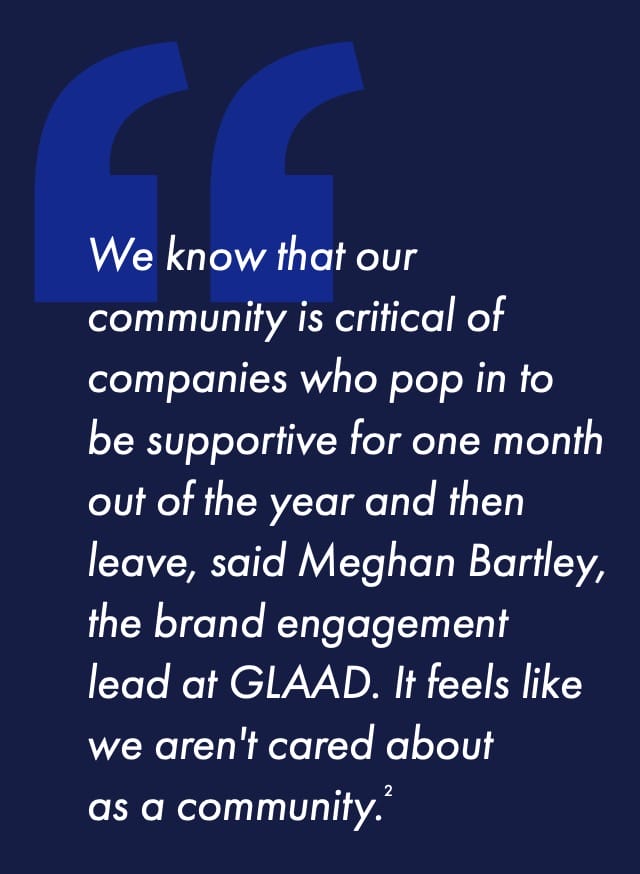 We also heard this echoed in our survey, with the industry being +52% more likely this year compared to 2021 to completely agree that they “show support of LGBTQ people and causes in other ways (besides including us in multi-platform video ads).” However, other themes also emerged more pronounced this year than 2021, including the need for internal commitments. In particular, the industry is +48% more likely to completely agree this year that their organization(s) “need to be more inclusive internally before we can feature diverse groups in our advertising.”
We also heard this echoed in our survey, with the industry being +52% more likely this year compared to 2021 to completely agree that they “show support of LGBTQ people and causes in other ways (besides including us in multi-platform video ads).” However, other themes also emerged more pronounced this year than 2021, including the need for internal commitments. In particular, the industry is +48% more likely to completely agree this year that their organization(s) “need to be more inclusive internally before we can feature diverse groups in our advertising.”
With a growing workforce of young adults who are more likely to be in the LGBTQ community, know LGBTQ people, and support the community, being a brand ally is far from controversial. Data from MRI-Simmons shows that 84% of Americans have an LGBTQ-related cause they find important for them to support.3 In our Advertising Visibility Index, we heard again from consumers about the conditions brands must meet before they would feel comfortable seeing our community represented in ads. Providing inclusive, relevant policies and benefits to LGBTQ employees is the first condition brands must meet. This is followed by hiring LGBTQ talent in front of and behind the scenes and involving LGBTQ employees/stakeholders in creating LGBTQ-inclusive advertising. It is clear to consumers and the industry that inclusive protections and policies for LGBTQ employees are critical before a brand considers including our community to benefit its bottom line.
The question is, do you have those policies in place? If not, why?
Our organization needs to be more inclusive internally before we can feature diverse groups in our advertising
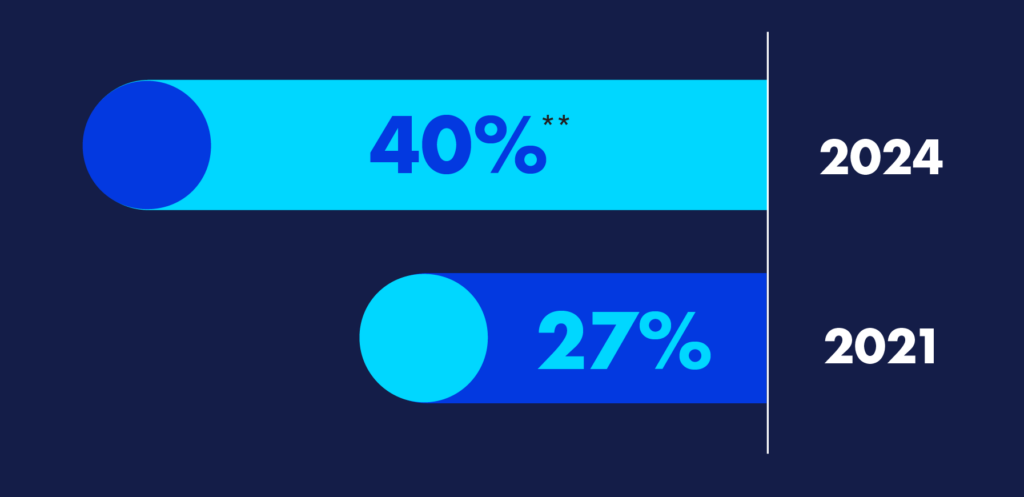
Instead of using our multi-platform video advertising, we show our support of LGBTQ people and causes in other ways
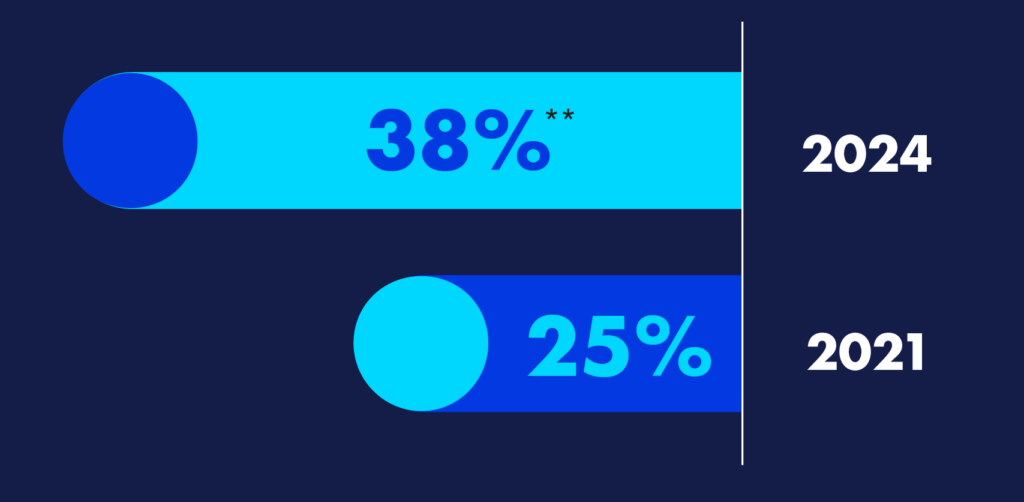
Conditions consumers say brands need to meet before they would be comfortable seeing LGBTQ people in ads:
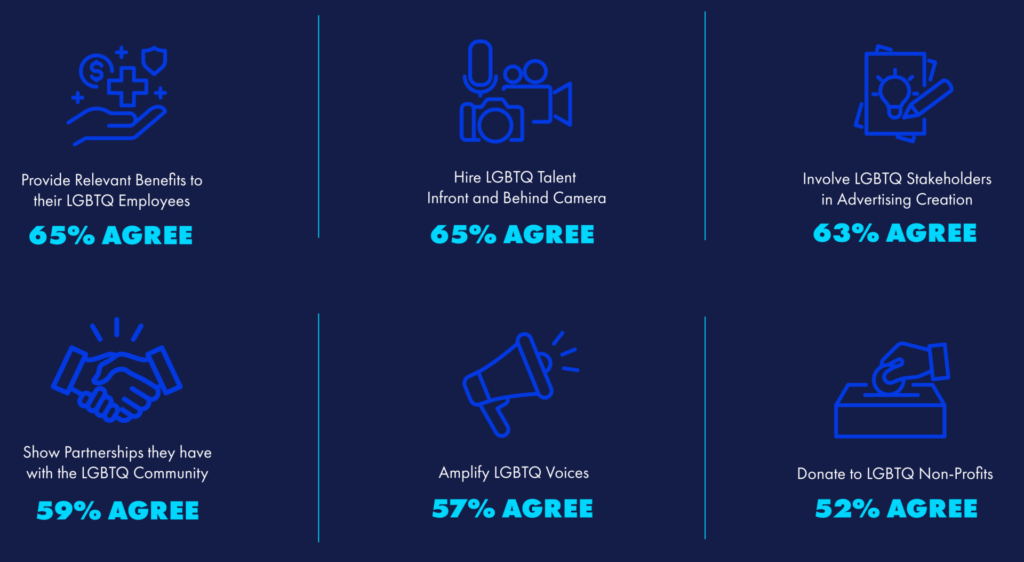
An inauthentic execution of LGBTQ people and scenarios would lead to a larger backlash than not featuring them in ads at all (% completely agree)

percent completely agree
**statistically significant at 95% confidence
Advertisers and agencies are +55% more likely this year to say they don’t have the expertise and knowledge to get representation “right”

We don’t have the expertise and knowledge to get the representation of LGBTQ people and scenarios in advertising “right”
percent completely agree
**statistically significant at 95% confidence
Brands and agencies are facing fear of backlash and boycotting, and the reasons are multifaceted. The industry is more fearful of facing backlash and boycotting due to LGBTQ inclusion, as opposed to facing backlash and boycotting for lack of LGBTQ inclusion. But the fears go beyond inclusion alone. Data from our survey shows the industry is more fearful this year of an inauthentic execution resulting in backlash and realize they don’t have the expertise to get representation “right.” This year, industry executives are +50% more likely to say that an “inauthentic execution of LGBTQ people and scenarios would lead to a larger backlash than not featuring them in ads at all.” They are also +55% more likely to say they “don’t have the knowledge to get the representation of LGBTQ people and scenarios in advertising ‘right.’”












